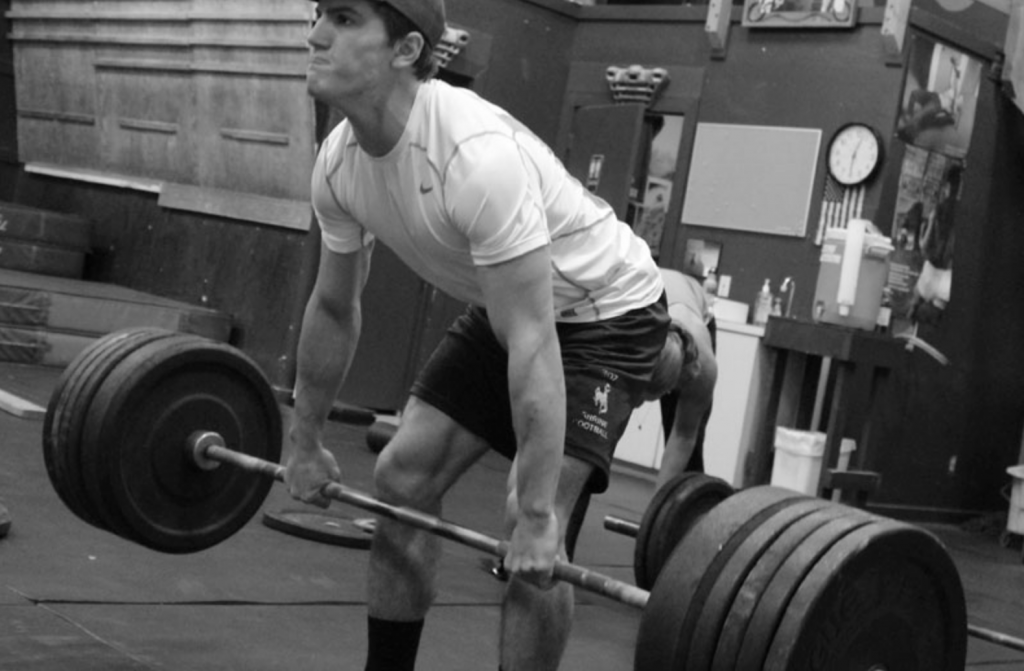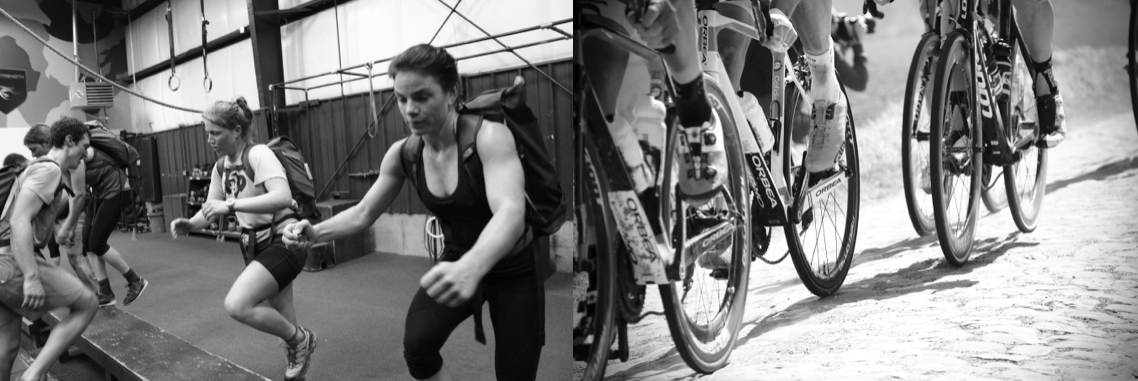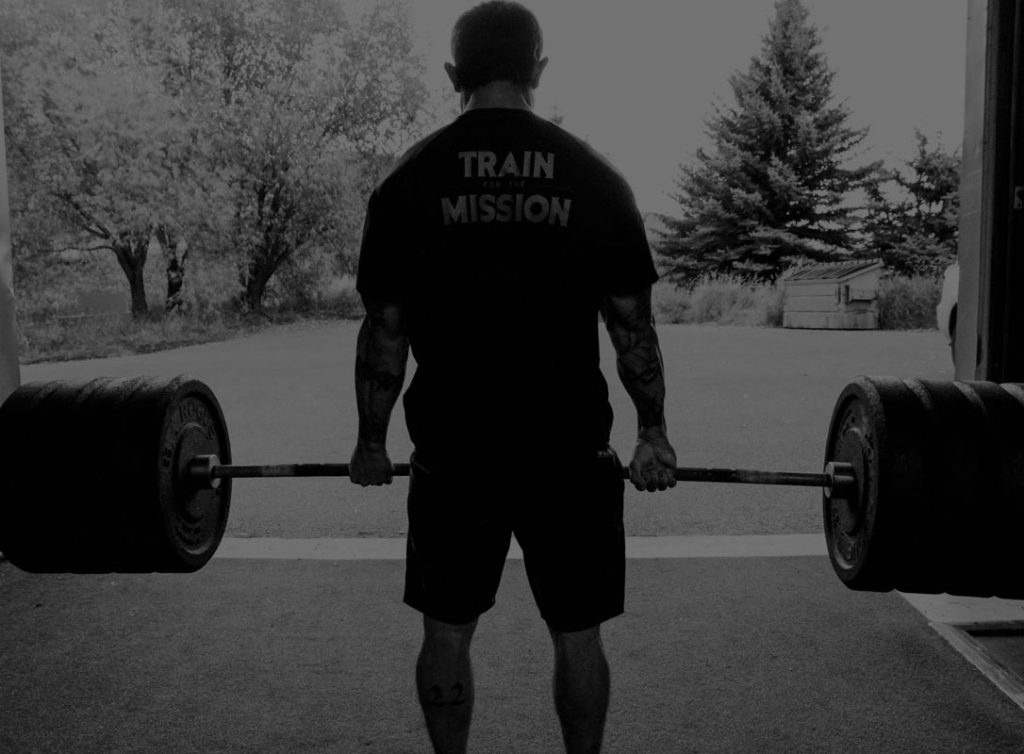QUESTION
I was subscribed to MTI when I was in the military doing military programs and have since unsubscribed since leaving the military. I saw great results from the programs I was using and would like to subscribe again but I don’t see any boxing specific programs, is there anything I could use in place of a boxing specific program or is there any chance of that program being created in the future?
ANSWER
Sorry – I don’t have a boxing-specific training plan. Closest we’d have would be a
BJJ Plan.
No current plans to build one – I simply am not familiar enough with the specifics of the sport.
– Rob
QUESTION
I’ve recently started your run improvement programming and my second strength session absolutely destroyed my legs to the point where I had a very hard time walking. What do you recommend for recover?
ANSWER
Soreness decreases as fitness increases. There’s no shortcut .
Options:
– Stick with the program as prescribed and do your best. Most accommodate in a couple weeks.
– Take an extra day off
– cut the prescribed rounds of the leg blaster progression in half.
– Rob
QUESTION
For the times provided by the run calculator, if I’m able to run the prescribed interval set quicker than the time prescribed on that set should I try to do so or should I focus on staying within those time frame provided?
If I should stay within the time frame, for personal knowledge and understanding, why that instead of completing the interval quicker? Thanks.
ANSWER
These should be hard … so either you didn’t run your best assessment (which would make these easier since they are base on your assessment results) or misread the calculator. But regardless, don’t slow down on the threshold intervals … if you can run them faster than prescribed, do so.
– Rob
QUESTION
I just had a question regarding the Big 24 training plan mentioned above in the subject. First off I am currently a squad leader in the Army Infantry and was wondering if running in the morning and or doing calisthenics on top of doing the sessions in this plan would be too much or overdoing it and would result in me injuring my self and doing more harm than good. Would there be room to change stuff around in the schedule if it is too much?
ANSWER
Others have completed Big 24 as a 2-a-day with their Army PT.
– Rob
QUESTION
I want to join swat within the next year so I want a plan that will not only get me in shape and ready for swat school and swat PFT but a plan that will help me excel in the physical fitness portion of this endeavor. I want to go in there and be in superior shape then the guys that are already part of swat. I humbly ask for your guidance and expertise in this area in order to accomplish the mentioned goals, thank you.
ANSWER
Then …. drop into the plans/order in the
Gun Maker Packet – these are specifically designed as day to day programming for full time SWAT/SRT, then ….
Re-do the SWAT Selection Training Plan the 7 weeks directly before selection.
– Rob
QUESTION
I am a longtime fan of both your training plans and articles (your failure resume really impressed me as it takes quite a bit of ownership for someone to admit their mistakes particularly in public.) I have used Rat 6/357 Strength and various others over the years to stay in shape in the Marine Corps and am currently using your Big 3 + Running program. Anyway, long story short I am thinking about competing in the USA Bobsled Combine this summer and figured who better to ask to help me come up with a training program than you. The combine consists of sprints (0-15 meters, 0-30 meters, 0-45 meters and 30-45 meter on the “fly”), as well as a shot toss and and a broad jump both for distance. If a person succeeds at the combine they are invited to attend a training camp that consists of a 1RM power clean and a 3 RM Back squat . Is this something that you would consider writing a program for? I would happily pay whatever you think is appropriate. In either event thank you for all the awesome programming and the hours of strength training that you have created! Truly you have made me stronger.
ANSWER
Sorry – can’t help with this one.
The issue is the sport-specicificity of the short sprints. My guess is technique is huge with these and I have no experience with that type of track-specific technique or fitness coaching. My understanding is most those athletes come from high level track/sprint backgrounds.
– Rob
QUESTION
I’d like to start off by saying I have been training with MTI for about three years now and my fitness level far outshines my peers at all training I have attended. Currently, I am at IBOLC and looking to find a training program that fits the in and out of the field schedule I have while setting a strong foundation for Ranger School. Some weeks I will be in garrison and will be out by 1700 each day. Other weeks I will be in and out of the field or in the field all week. I always have weekends off. Any suggestions?
ANSWER
No easy answer for you here. For those attending Ranger immediately after IBOLC, I generally suggest they complete the
Ranger School Plan prior to IBOLC, knowing the mixed up schedule – then do their best to maintain fitness at IBOLC.
In general, if you are attending Ranger directly after, the “crux” events at the first week are the strict push ups, the 5 mile run, and the long ruck. I’d look at our
Ranger School Plan and as time permits, follow the programming focusing on those events.
If you’ve got time between IBOLC and Ranger, where you’ll be able to train specifically for Ranger, and now you’ve got gym access, I’d recommend the sessions in
357 Strength while in garrison.
– Rob
QUESTION
Can you suggest a course(s) for an ageing climber (60) considering a guided big mountain (Ama Dablam, Himalaya) in November? With only 5 months to train, the training factor will force my decision soon.
I’m not sure whether your Big Mountain program or Alpine Assessment or other choice would be best. Looking over the Alpine Assessmnet, I will need a ramp-up program. If I were to run 15km today, I would not manage within your time rankings.
A few facts on the climb:
- 6812 meters (23,346) summit
- All vertical sections use fixed rope with ascender pull (lots of upper body work)
- Sustained steep climbing to summit
- Rappel technique for descent
A few local crag climbs will be part of my plan, but I would mostly appreciate any suggestions or thoughts on your conditioning courses.
ANSWER
5 Months – 21 weeks. Here’s what I’d recommend:
Weeks. Plan
– Rob
QUESTION
Thanks for the great work at MTI. I have a question about concurrent training for urban firefighting and backcountry hunting.
I’m working my way through Jaguar and will continue through the rest of the Big Cat series. I work at a 6-station full-time fire department running about 11,000 calls a year in a city of about 200,000. I staff an engine and a USAR heavy unit. I have found immediate translation from the training into structure fires in our area. Particularly in chassis integrity.
However, I’d like to also train for weekend-long backcountry hunting trips from sea-level to about 3,000 ft of elevation. I’m hunting pig and mule deer in the central coast area of CA, so relatively low elevation and low animal weight. I am a regular hiker and spend a few weeks a year on wildland fires.
How would you suggest I incorporate some backcountry hunting work to hunt in August and September while continuing my base programming for urban fire? For obvious reasons, the urban fire programming and its benefits are the priority.
Just saw your email about your personal hunting programming and loved it. What are your thoughts?
ANSWER
The biggest bang for your buck would be to get in 1-3 hours vertical/week … loaded or unloaded vertical hike uphill and run down. You can do laps on shorter, steep hill, or do a longer effort on a tall hill. Not sure your terrain, but it’s not important.
For load – I use water so I can dump it at the top. Not sure your daypack size, but 24-32# (3-4 gallons should be all you need). Hike up, dump, run down, and repeat for a short hill. When I’ve done laps I’ve just keep extra gallons of water at the truck and made the transition quick.
If you get more than 2x/week to train for the hunt, add in a long trail run on day 3 …. 60-120 minutes.
– Rob
QUESTION
I was looking into your athlete subscription and had a quick question. I’m currently a Engineer PL with a background in MMA and weightlifting. Running track and cross country while I was younger I generally had no problem with endurance events, running 11min 2 miles and an 18min 5k. However, as I’ve gotten more muscle it’s definitely tapered off. Still can run 5mi under 40min and did a 2:37 on Sapper 12 Mile ruck but not where I’d like to be. My strength isn’t an issue. At 165 BW I’ve got a 410 Squat and 445 Deadlift but rucking I feel is my biggest Achilles heel since I’m a shorter guy. I plan on going to selection late next year or the year after but waS curious as to which program would be most conducive to addressing my weaknesses while still allowing me to do AM PT with my guys. I have no equipment limitations, nor do I mind large investments of time. In Hawaii, so ocean swims and beach runs/rucks are a viable option as well. Saw Selection program but wasn’t sure if that was the best avenue as I have plenty of time to prep. Ranger end of this year as well. Sorry for the long winded email.
ANSWER
It’s a little unclear from your note exactly what you’re looking for – A multi-modal program that includes rucking/running or a plan focused just on running or rucking?
Here are some options:
Multi-Modal, Day to Day: Plans/order in the
Greek Hero packet of plans, beginning with
Hector. These plans are designed as day-to-day training for military infantry/SOF and concurrently train strength, work capacity, chassis integrity, tactical agility and endurance (run/ruck). Another option would be
Valor.
It’s too early to drop into a specific selection training plan until you know your schedule.
– Rob
QUESTION
I’m looking for my next challenge.
And after a long time. I want your advice.
I’m in great fit, I think I can handle these training programs.
sfod-d, basic recon v2, recon challenge, ruch based, devgru.
Can you please tell me about what each program puts emphasis on?
And which of them is the most hardest and intense?
ANSWER
Each of these plans is specific to that unit’s selection. Pls know that the Basic Recon Course Training and DEVGRU Plans require swimming pool access – which is difficult now.
– Rob
QUESTION
I’m looking for a beginning strength and conditioning plan for hiking, backpacking, and archery hunting. I have visited your website and read a lot of the training plans, but I’m a bit confused as to where to start.
I’m late 40’s, in decent physical shape, with an old right knee injury that is sore from time to time so running and barbell squats are a no-no (rucking and adjustable dumbbells work well, though). I lift weights with dumbbells 3-4 times per week. For cardio, I have a GORUCK backpack that I use with 20 pounds twice per week on hikes ranging in length from 2-6 miles in varying terrain. I recently started to learn how to shoot a compound bow, and look forward to hunting turkey, deer, antelope, and elk, in the near future (hopefully this season). My diet is strict and clean with lean meat (mostly bison, ground turkey, wild fish), lots of vegetables, fruit, some grains, and about 90 ozs of filtered water per day. I take supplements such as a multi, VD3, and a very clean protein powder mixed in my daily smoothies, all from top of the line companies.
I live here in California, and the Sierra’s can really kick your ass if you are not prepared. I have read over your Peak Bagger and Backpacking Preseason training plans and thought that they may be a good starting point, but I figured I should reach out to you guys and get your advice. Ultimately, after I have built a solid base of strength and conditioning, I would probably need to move on to the Backcountry Hunting Base plans to take the strength and conditioning to another level.
Final question. If I purchase a plan, are they mine to keep, or do I have access to them only for a set amount of time on your website?
Thank you for all of your help. Really appreciate it.
ANSWER
Given your equipment and exercise restrictions, I’d recommend
Backcountry Hunting Base to begin. The strength work is all bodyweight based, so you’re covered there. You will need to build a 60-pound sandbag – an old duffle bag or back pack filled with dirt/sand will work (put it first in a contractor’s bag).
This plan does include a 3-mile run assessment and follow on intervals. Replace the running with a steep, loaded hike approximately 30min long, with a 30# backpack, and do it at threshold pace (fast as possible), weekly.
Once you purchase an individual training plan, you have access to it as long as we’re in business. Access is online via a desktop or our app.
– Rob
Subscribe to MTI's Newsletter - BETA




